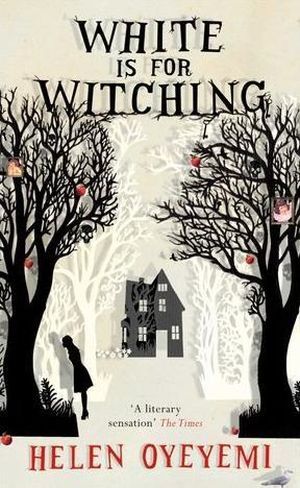
Your Guide To The Domestic Horror Sub-Genre
Fear of the unknown is often what drives horror stories. But what about horror that starts a little closer to home? Sometimes the things we should fear the most are the things that live within ourselves, our homes, and even the people we love. That’s what domestic horror is all about.
What is domestic horror?
Domestic horror — or “horror that comes from within the family,” as Nathan Ballingrud defined it in his essay “The H Word: Domestic Horror” — is deeply connected to real-life fears we have about ourselves and the people we love. Domestic horror teases out horrifying questions such as: What if the people I trust most aren’t who they say they are? What if the threat is coming from inside of the house? What if I’m not safe where I sleep? What if no one is there to protect me? What if no one loves me? These are questions that dig into our deepest insecurities and vulnerabilities. And thus, they are questions that truly haunt us all.
Domestic horror takes a look at suburban life, domesticity, and the family unit, and it deconstructs them. Why is that so scary? Because popular culture has idealized the nuclear family unit and the home as not only a safe space, but a place of comfort, joy, and the ultimate goal for anyone who wants to live a fulfilling life. For most people, the reality of family life is a little — okay, a lot — more complicated. But what could possibly be more horrifying than having to address the messed up stuff that goes on in your own home?
The Best Domestic Horror Books
Considering how deeply unsettling the genre is, it should come as no surprise that when you look up the scariest books of all time, many of them could be categorized as domestic horror. Here are some of the scariest domestic horror books that define the genre.

We Have Always Lived in the Castle by Shirley Jackson
Shirley Jackson is the queen of domestic horror. There are other Jackson books that could be included here — The Haunting of Hill House, for instance. But We Have Always Lived in the Castle is essential domestic horror because of the sheer claustrophobia of it and the way the story focuses on tense and troubled familial relationships. This is the story of Katherine “Merricat” Blackwood, who lives with her sister and uncle. Six years ago, Merricat’s family were victims of a horrible tragedy that left the three remaining members of the Blackwood family living alone in their estate, isolated from the rest of the community.

Rosemary’s Baby by Ira Levin
When it comes to domestic horror, I think that pregnancy horror probably deserves to be its own sub-category. But in terms of horror about pregnancy, Ira Levin’s Rosemary’s Baby absolutely takes the cake. This novel explores the horrifying constraints placed on women in the domestic sphere, especially when it comes to motherhood. Filled to the brim with unsettling paranoia, Rosemary’s Baby is about a young pregnant woman who feels as if she can’t trust anyone around her. Not her neighbors. Not her husband. And not even the baby growing inside of her. Also of note is Ira Levin’s The Stepford Wives, which similarly explores the horrors and claustrophobia of domestic life.

The Shining by Stephen King
The Shining is an excellent example of a haunted house story that sheds light on the horrors happening within a family unit. If you’re somehow unfamiliar with this story, here’s the deal. The Torrance family goes to live in a secluded, snowed-in hotel in the middle of nowhere, where patriarch Jack Torrance will work as the caretaker of the hotel during its off-season. There, a series of strange and supernatural events will force Jack Torrance to confront his conflicting feelings about his role as a father, his alcoholism, and his violent tendencies.

The Changeling by Victor LaValle
In an interview with The Miami Rail, author Victor LaValle said he wrote his horror novel The Changeling about his own fears of becoming a father while still grappling with growing up fatherless. “I realized how ill-equipped I was for my kid because I was so in my head about my own hurts,” LaValle said. “I knew that if I was wrestling with this, many of my friends, male and female, who were fatherless — even if their father was in the house — must be wrestling with it, too.” In The Changeling, LaValle takes that very complicated topic and turns it into a dark fantasy/horror novel about a man on a journey to find his wife after she commits a terrifying act of violence.

White is for Witching by Helen Oyeyemi
This deeply unsettling novel incorporates many horror elements — ghosts, a haunted house, and even vampires — to confront how the effects of grief and loss, mental illness, and racial politics affect one family over generations. The Silver home is the ancestral home of the Silver family, and now Miranda Silver, her twin brother Eliot, and their father are living there and have converted it into a bed and breakfast. But there’s something strange about the home, which seems to be especially unwelcoming to outsiders. And Miranda is starting to experience a strange hunger.

Just Like Home by Sarah Gailey
Sarah Gailey’s Just Like Home is a brand new 2022 novel, but it’s one of the most terrifying domestic horror novels I’ve ever read. This novel is a haunted house story mixed with a true crime–inspired thriller that ultimately tells the story of one woman’s unsettling relationship with her mother, her serial killer father, and their haunted family home. When Vera was a child, her father was arrested for murder. He committed several murders in their home, right in the basement, where he also hid the bodies. Years have passed, and Vera hasn’t been back to her childhood home since she became estranged from her mother. But when her sick mother asks her to return to home, Vera obeys, despite the hard feelings and the difficult memories.
Of course, these are just a few of the many examples of domestic horror fiction that are out there. Considering the fact that domestic horror is arguably the scariest kind of horror there is, quite a few authors gravitate towards this genre. It’s also a popular genre in many critically-acclaimed horror films, including one of my personal favorites, Ari Aster’s 2018 film Hereditary.
And if you’re interested in domestic horror, you might also be curious about domestic thrillers. Or look into domestic horror’s close cousin, psychological horror. And don’t forget to check out this list of the most influential horror fiction.









